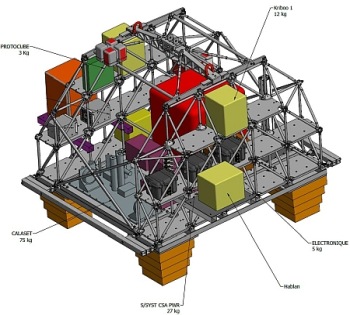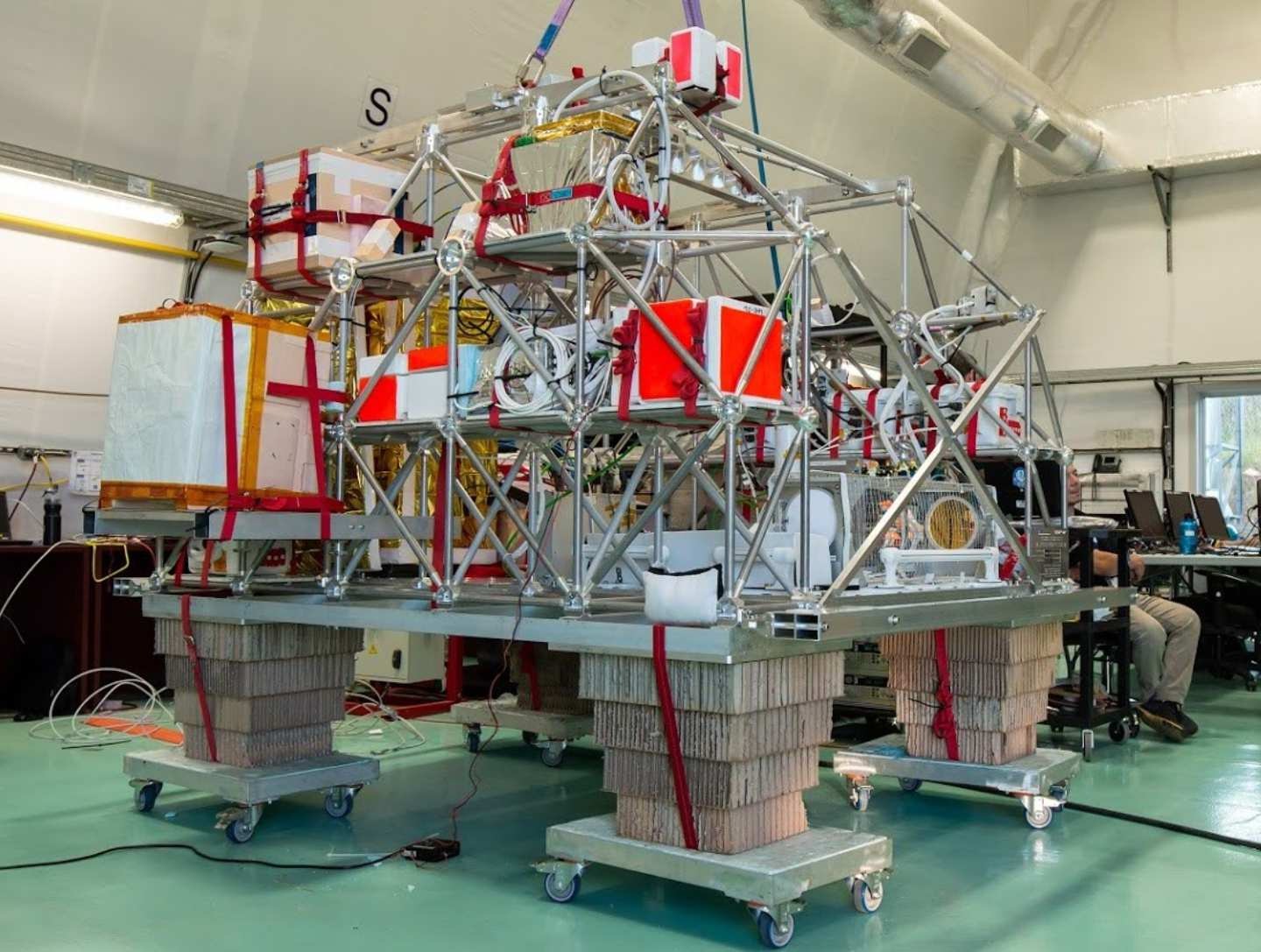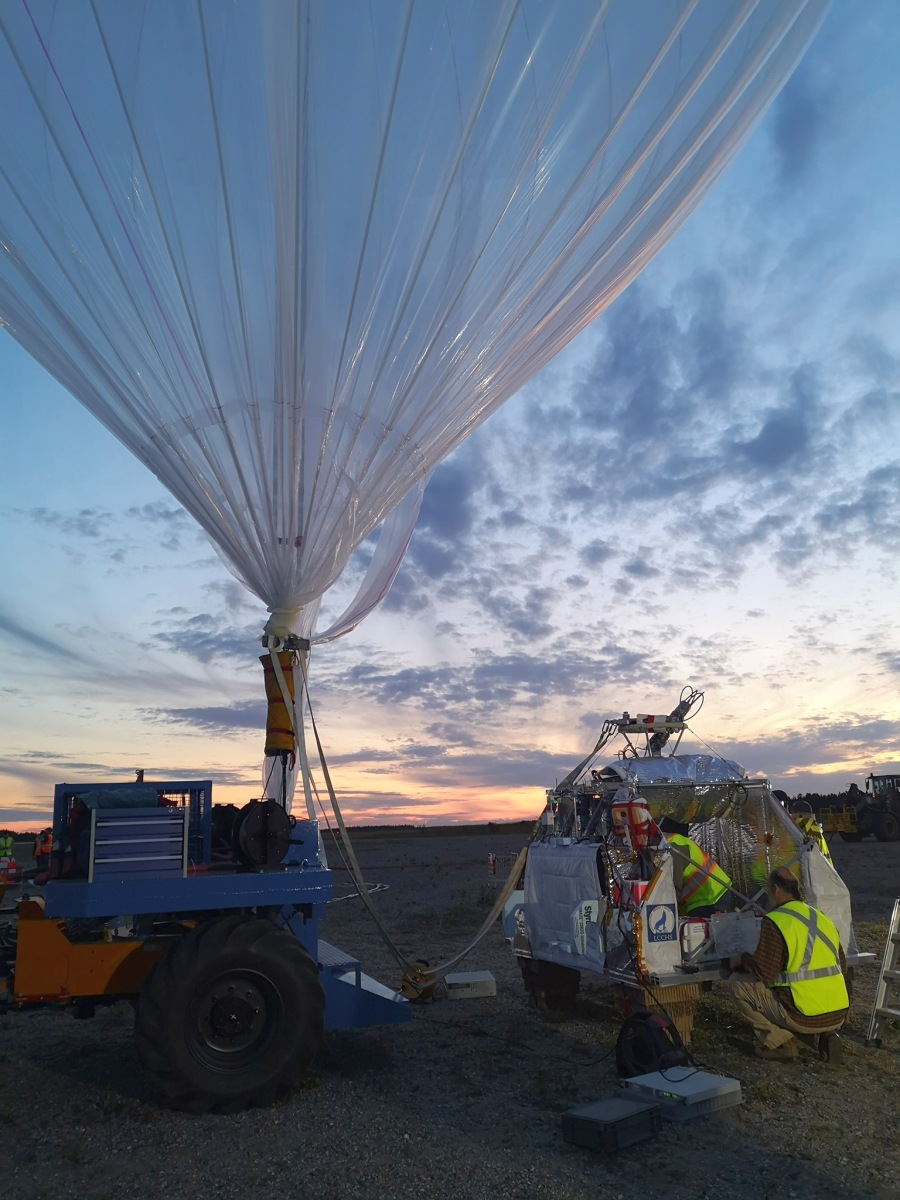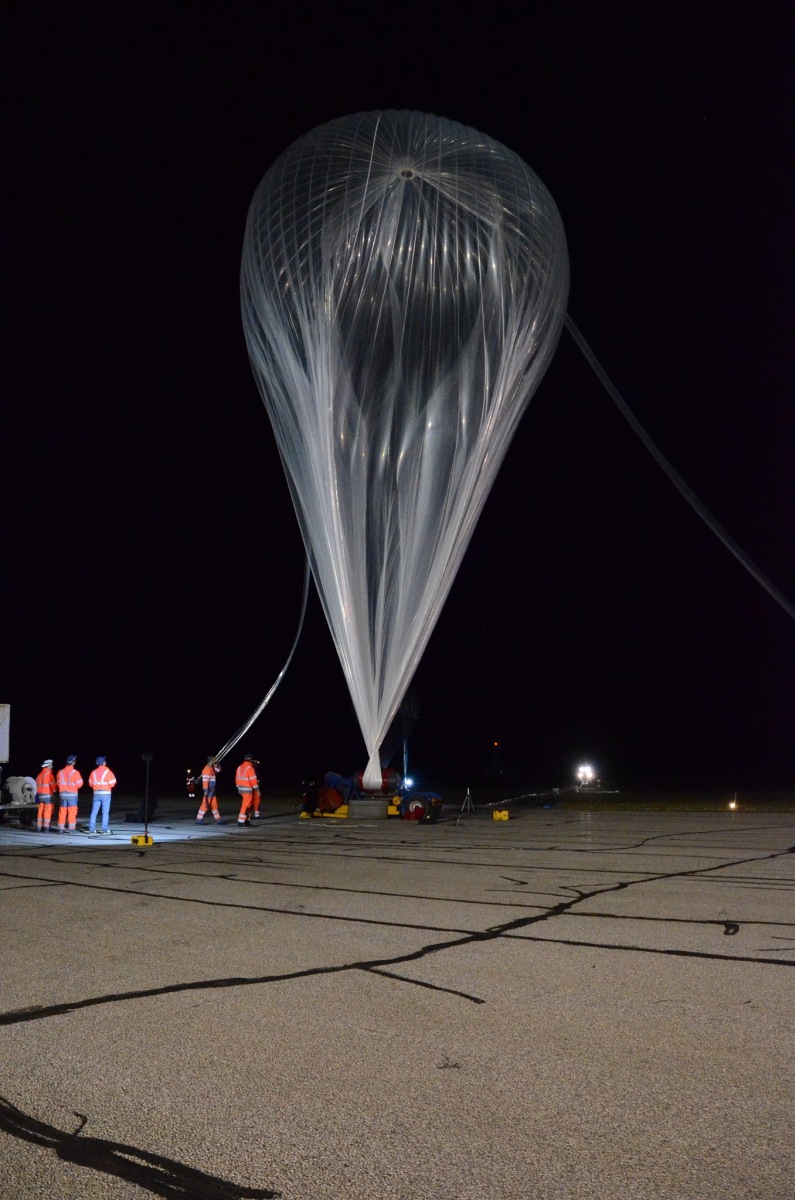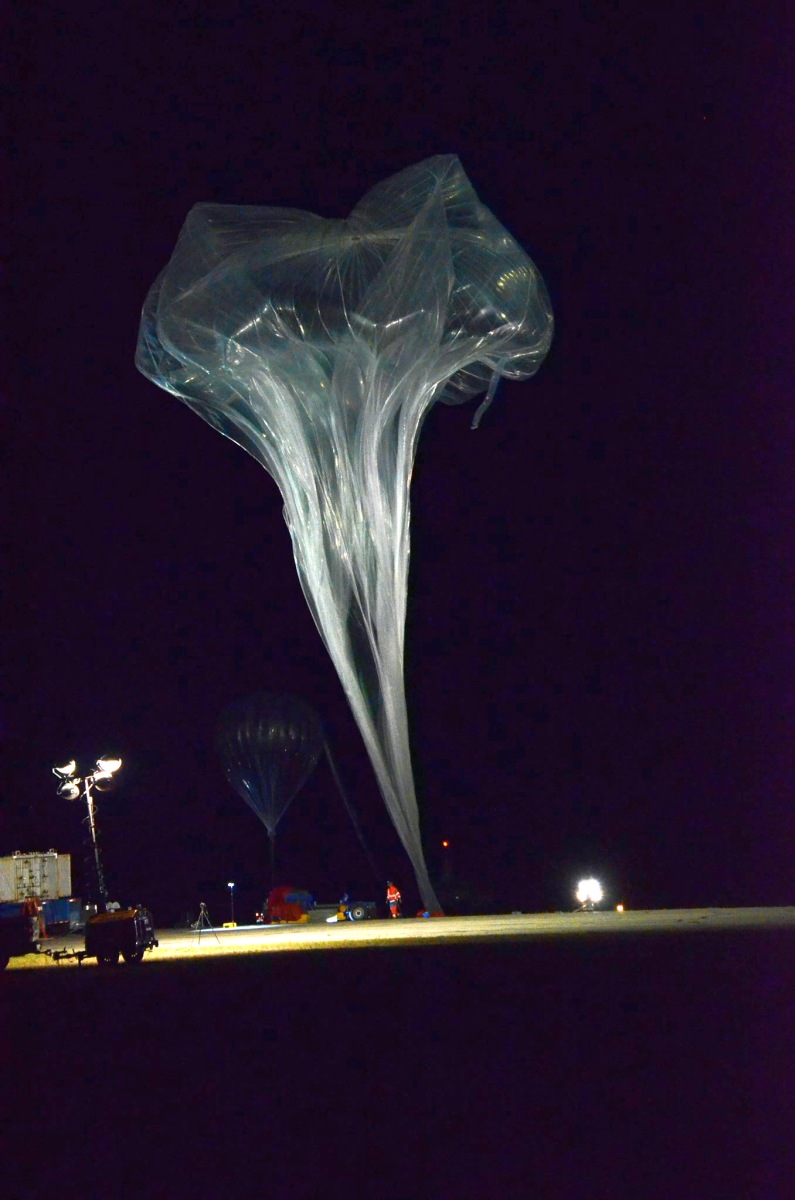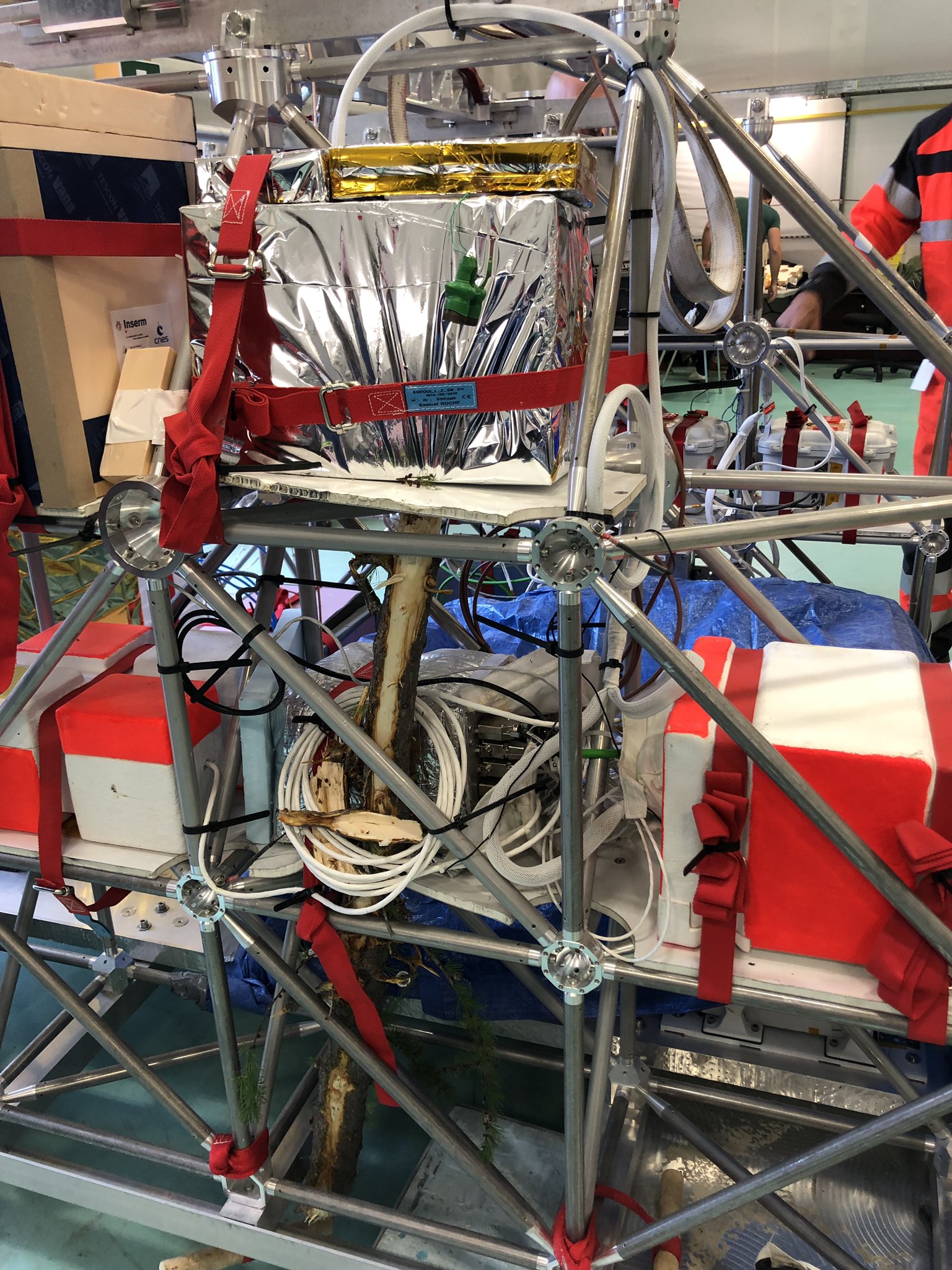Purpose of the flight and payload description
The CABUX mission served to test several Canadian and European experiments using a standard CNES gondola. At left we can see an scheme of distribution of the payloads in the platform (click to enlarge).
On the Canadian side, the experiment was:
Canadian Atmospheric Laser Absorption Spectroscopy Experiment Test-bed (CALASET) a laser absorption spectrometer developed by the University of Toronto. It aims to improve an instrument that studies how trace gas concentrations in the atmosphere change with height. Scientists and students are developing a new capacity for validation of satellite limb observations and implementing a platform to test innovative atmospheric measurement technologies.
On the other hand, the European experiments were:
High-Altitude Balloon Light at Night Experiment (HABLAN) a night-vision camera for acquisition of multi-spectral images of nocturnal artificial light to analyse light pollution. The experiment was developed at Eötvös Loránd University from Hungary.
XENON an experience developed by L'institut de Physique du Globe de Paris (IPGP) aimed to obtain samples of Xenon and other noble gases from the atmosphere at three different altitudes (10, 20 and 30 kilometres). It consists of three sets of two sampling cylinders that are initially in a vacuum and fill by sucking in gases when their valves are opened/closed.
VISTRO a high-definition camera developed by Airbus Defence & Space that will ultimately be capable of observing Earth in the visible and infrared from the ZEPHYR solar drone.
ProtoCube an experiment designed to test a new cosmic ray measuring instrument developed at the KTH Royal Institute of Technology from Sweden.
BERNADOTTE (Ballon d'Etude Radiobiologique sur la NAture et la DOse physique et biologique des particules à très haut Transfert d'Energie) an experiment to study the effects of particles from the stratosphere (between 10 and 50 km altitude) on human cells frozen and exposed with different shieldings. The project if developed by the Institut National de la Santé et de la Recherche Médicale (INSERM) and funded by the Centre National d'Etudes Spatiales (CNES).
Video of the launch operations and ascent of the balloon
Details of the balloon flight
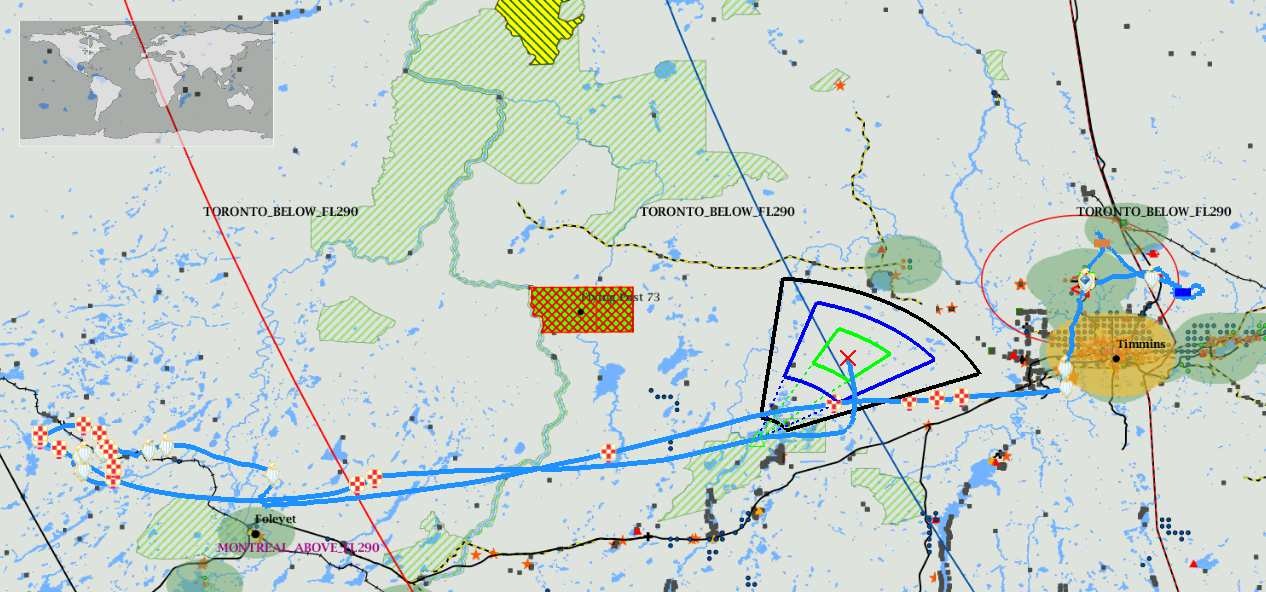
Balloon launched on: 8/26/2019 at 3:09 utc
Launch site: Timmins Stratospheric Balloon Base, Ontario, Canada
Balloon launched by: Centre National d'Etudes Spatiales (CNES)
Balloon manufacturer/size/composition: Zero Pressure Balloon model 150z Airstar 150.000 m3
Flight identification number: NIMBUS-1
End of flight (L for landing time, W for last contact, otherwise termination time): 8/26/2019 at 12:09 utc
Balloon flight duration (F: time at float only, otherwise total flight time in d:days / h:hours or m:minutes - ): 12 h 24 m
Landing site: 30 km W of Timmins, Ontario, Canada
Campaign: STRATOSCIENCE 2019
Overall weight: 1534 kg
The balloon was launched from Timmins Stratospheric Balloon Base in Ontario, Canada at 3:09 utc on August 26, 2019. After a nominal ascent the balloon reached an initial ceiling of 32.8 km which was maintained for 4 hours and 11 minutes. After that a slow descent was initiated until reaching a final altitude of 18.4 km when the flight was terminated. The payload and balloon landed west of Timmins after a total flight time of 12 hours and 24 minutes.
External references
- HEMERA website
- Le projet BERNADOTTE INSERM website
- Strato-Science 2019 campaign Canadian Space Agency website
15199If you consider this website interesting or useful, you can help me to keep it up and running with a small donation to cover the operational costs. Just the equivalent of the price of a cup of coffee helps a lot.

